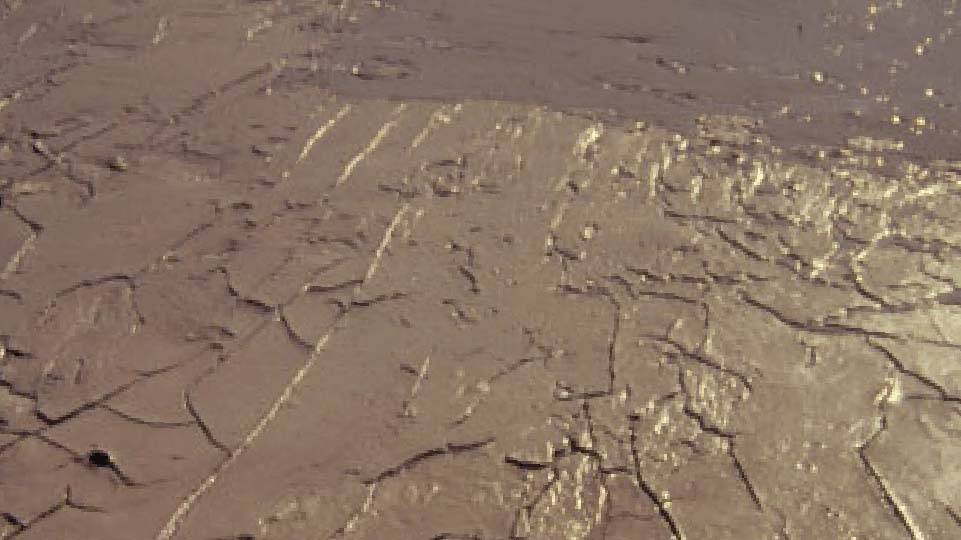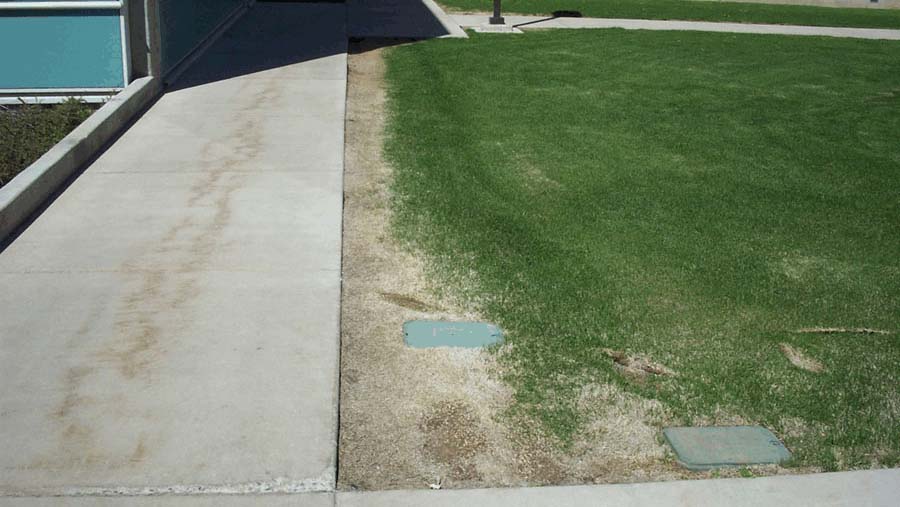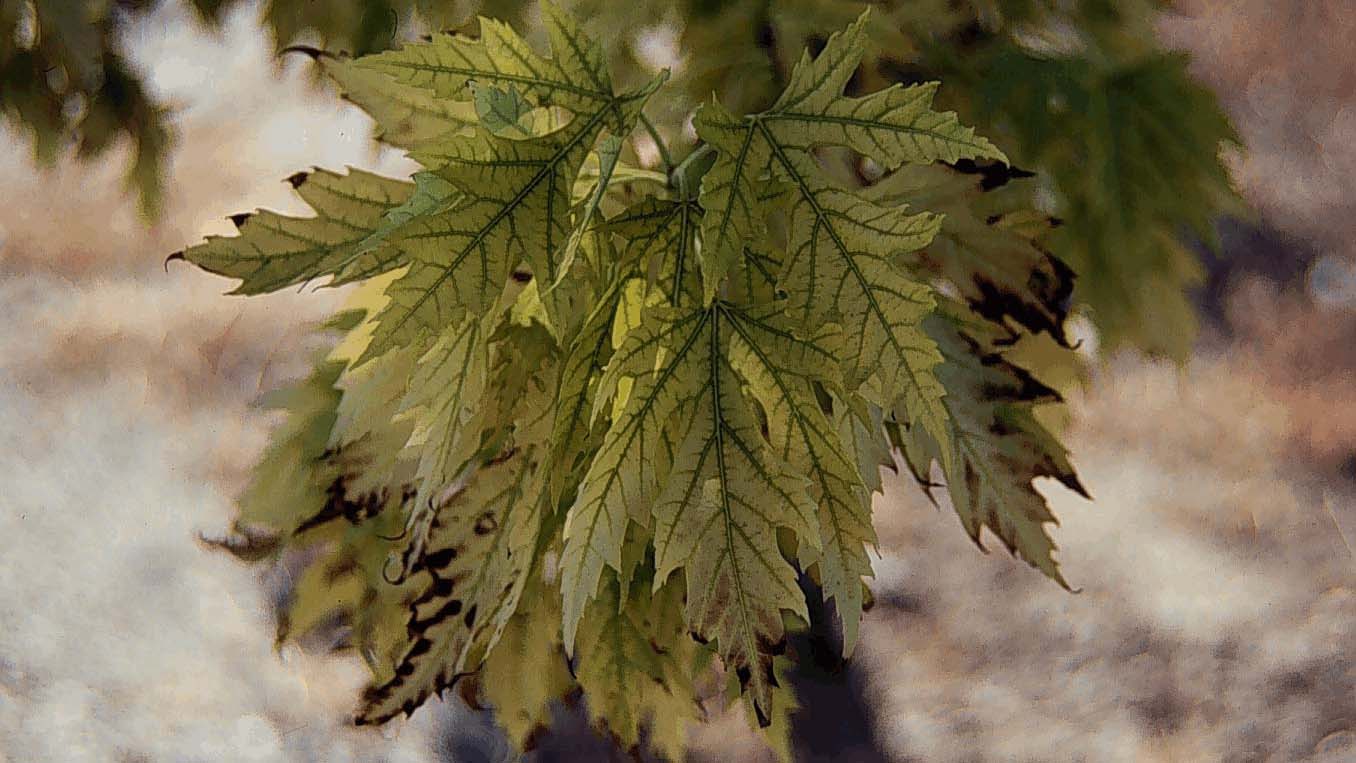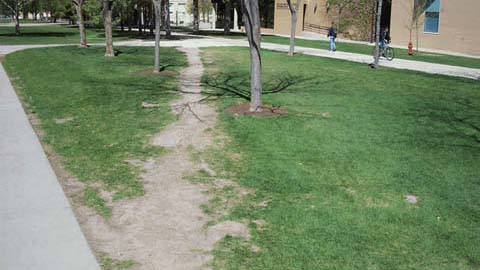Solutions to Soil Problems V. Low Organic Matter

Utah soils are inherently low in organic matter due to the desert climate and historically low plant growth rates. In Utah, soil organic matter levels are typically 0.25 to 1%, while regions with high rainfall such as the Midwest and Eastern United States have soils with as much as 7 to 10% organic matter. An ideal garden or landscape soil would contain a minimum of 5% organic matter.
Organic matter affects soil structure (aggregation), drainage, aeration (gas exchange properties), water holding capacity, pH, compaction and overall plant growth. Organic matter is essential and is the single most important amendment that can be added to improve plant growth in Utah soils.
Tillage accelerates the breakdown of organic matter. Gardeners and landscapers commonly complain about hard and “sterile” soils. These problems are directly related to low soil organic matter levels. In annual planting areas it is essential to return as much organic matter as possible to the soil, and even add additional organic matter to enhance or preserve good soil conditions.
Improving Utah Soils by Adding Organic Matter
Many different sources of organic matter area available in Utah. Livestock manures, composts, wood residues (bark, chips and sawdust), green manures, and commercial materials like peat are all readily available. The source of organic matter, rates applied, and the way organic matter is applied are all important considerations.
A fine-textured soil with no organic matter or structure (aggregation). The soil hardens and cracks when dry, and is very difficult to till.
Sources
Table 1 summarizes common sources of organic matter, their advantages and disadvantages, and considerations for use. Select an organic matter source based on cost, availability and information listed in Table 1.
Table 1. Common organic matter sources, their advantages and disadvantages, and special considerations for use.
| Source | Advantages | Disadvantages | Considerations |
|---|---|---|---|
| Livestock manures | high in nutrients | high in salts and weed seeds | apply no more than 1 inch annually |
| Composted manure | high in nutrients | high in salts and weed seeds | apply no more than 1 inch annually |
| Composted urban green waste | recycles a waste | rapid decomposition | |
| Wood residues (bark, chips, sawdust) | long lasting | immobilize (tie up) nitrogen in soil | apply 1 lb of nitrogen per 100 lbs of material |
| Green waste (grass clippings, leaves) | readily available; recycles a waste | rapid decomposition | |
| Peat and peat moss | acidic; lowers soil pH | expensive | incorporate thoroughly |
| Straw | readily available | immobilize (tie up) nitrogen in soil | apply 1 lb of nitrogen per 100 lbs of material |
| Shredded paper or cardboard | recycles waste; recycles a waste | immobilize (tie up) nitrogen in soil | apply 1 lb of nitrogen per 100 lbs of material |
Rates
One inch of organic matter added to annual planting areas each year will maintain or gradually improve soil conditions. If more organic matter is needed to significantly improve new sites, or in areas where perennial plants will be established, consider combining one inch of a high salt material like manure or compost with 1 to 3 inches of low salt material (see Table 1).
Ways to add organic matter
In annual planting areas organic matter can be spread on the soil surface and incorporated with a tiller or shovel. Double digging is removing the surface 6 to 12 inches of soil and mixing it with organic matter in a pile (first digging). Additional organic matter is added and incorporated with a tiller or shovel in the hole or depression created by the excavation (second digging). Soil from the first digging is then replaced. Double digging is labor intensive but increases the depth to which soil can be amended with organic matter.
Green manuring refers to the process of growing plants on a site and then tilling the area to incorporate all of the organic matter while the plants are still green. In this way gardeners can grow their own organic matter rather than bring an external source in.
Applying a thick layer of organic mulch such as wood chips or shredded bark is one way to amend the soil around established perennial plants. Organisms will move between the soil and mulch layer and gradually incorporate organic matter into the root zone of the perennials. This eliminates the need to till around established perennials, potentially damaging their root systems.
Published December 2010
Utah State University Extension
Peer-reviewed fact sheet
Download PDF
Authors
Kevin Heaton, Garfield-Kane County Extension Agent and Rich Koenig, Extension Soil Specialist
Related Research






